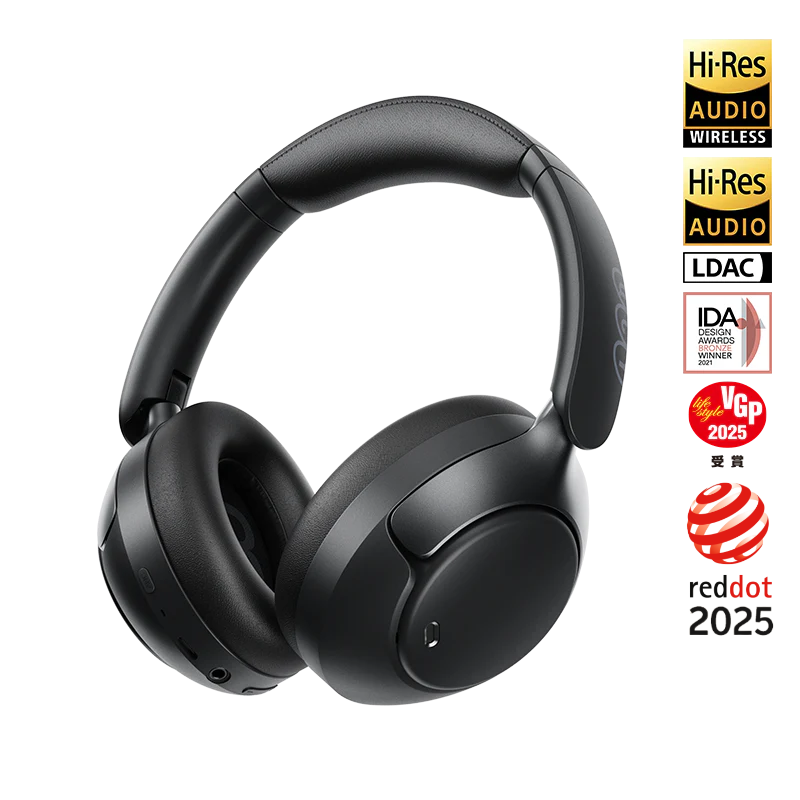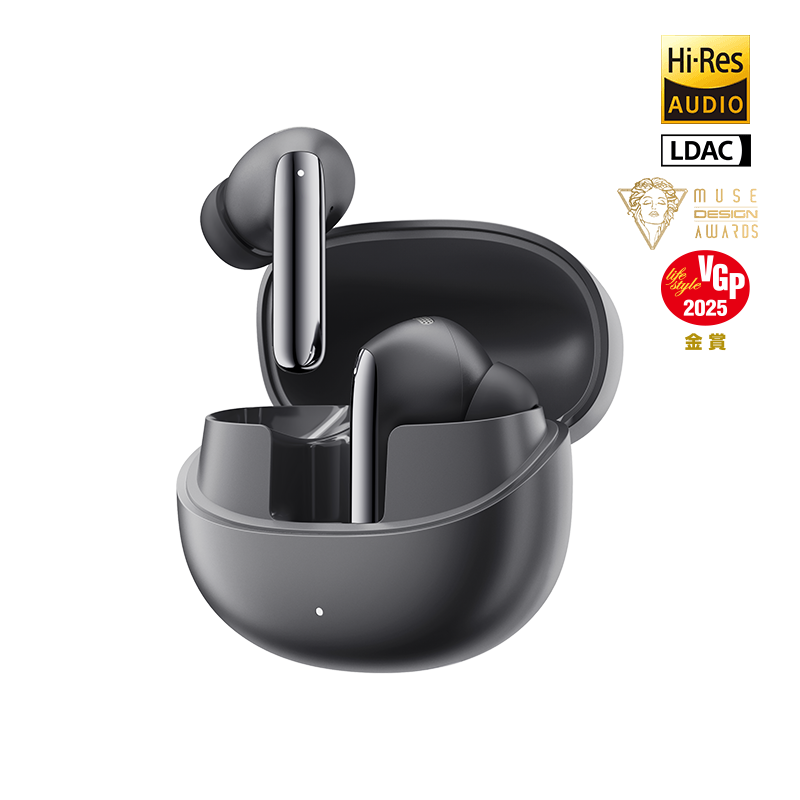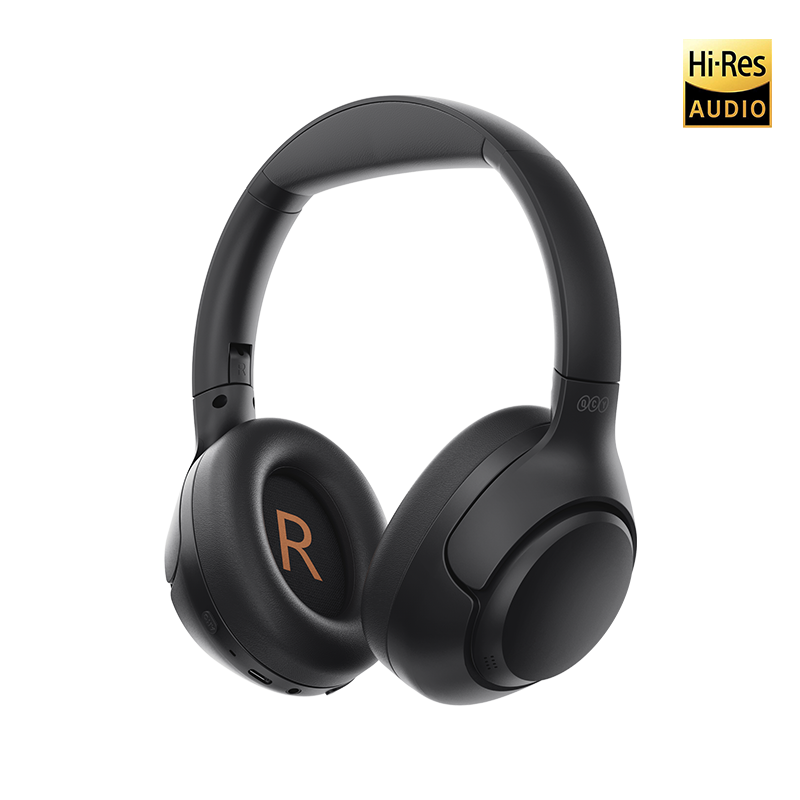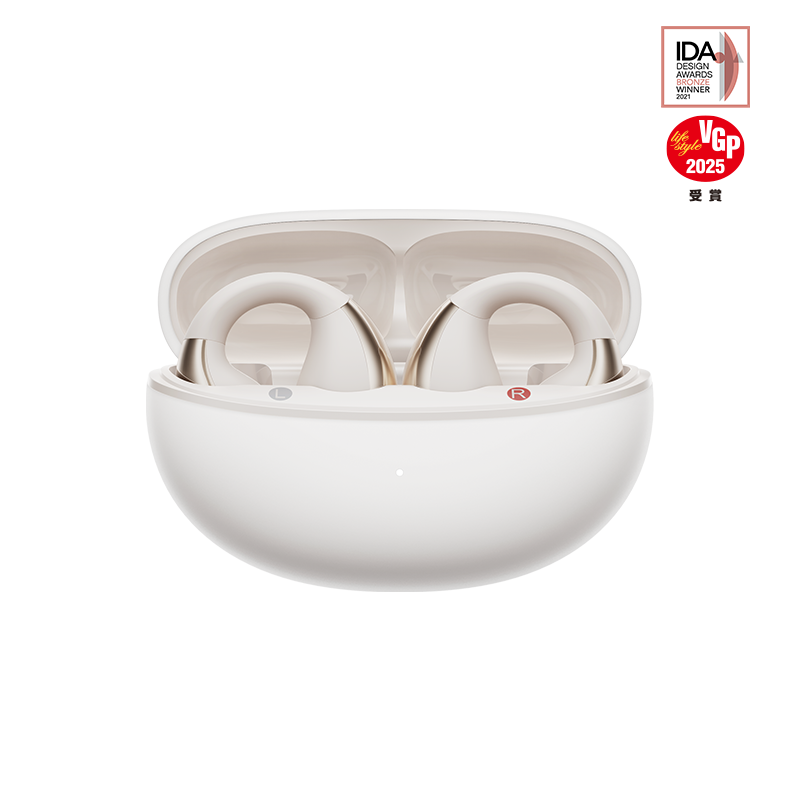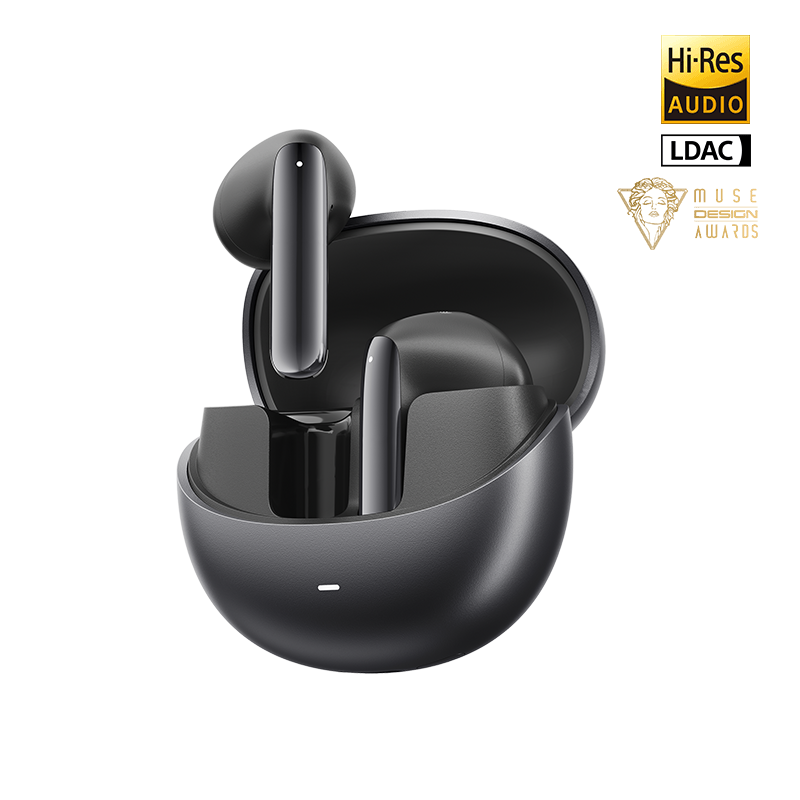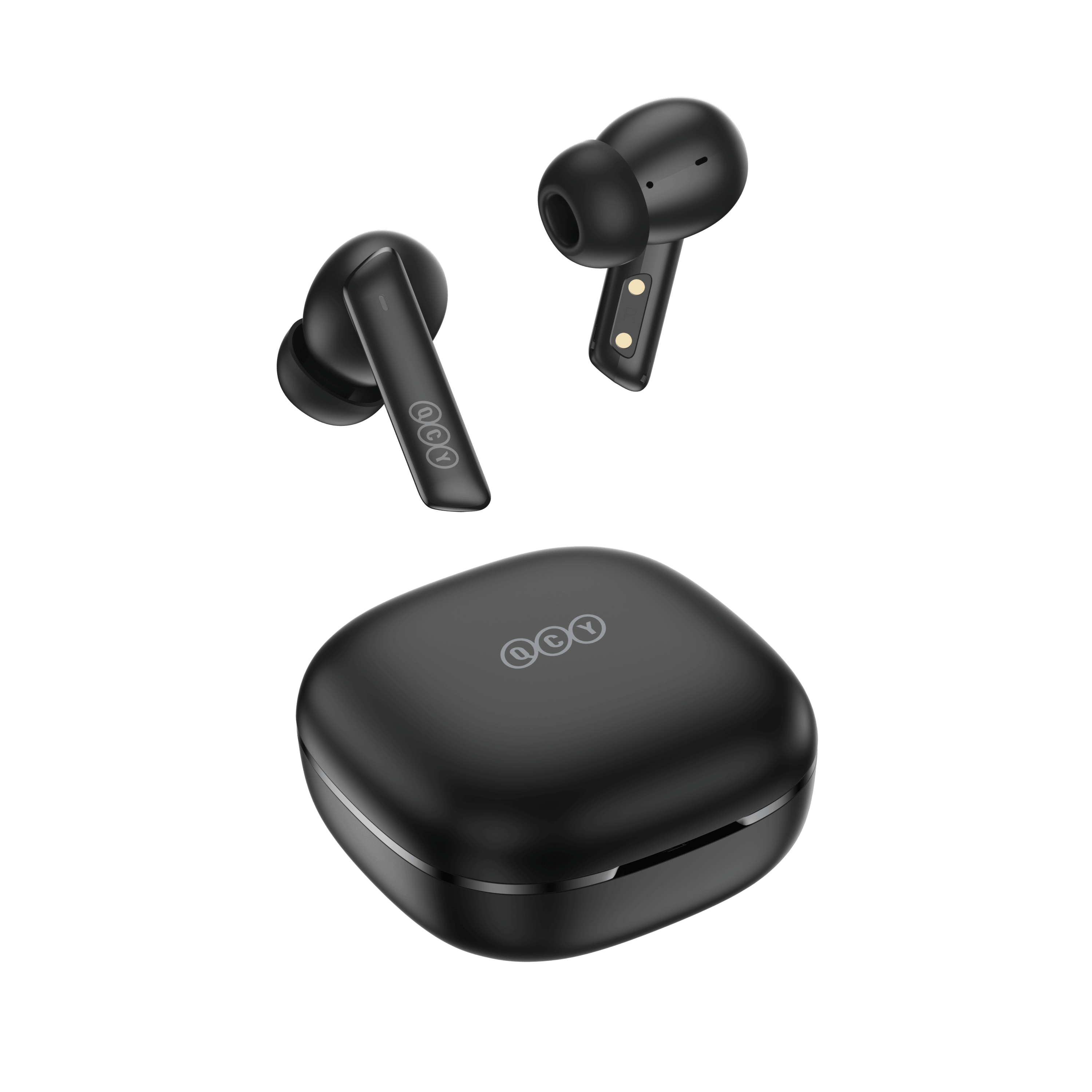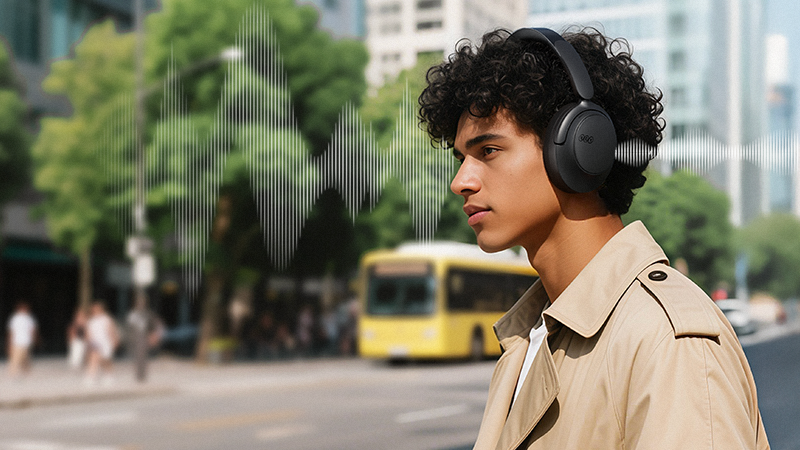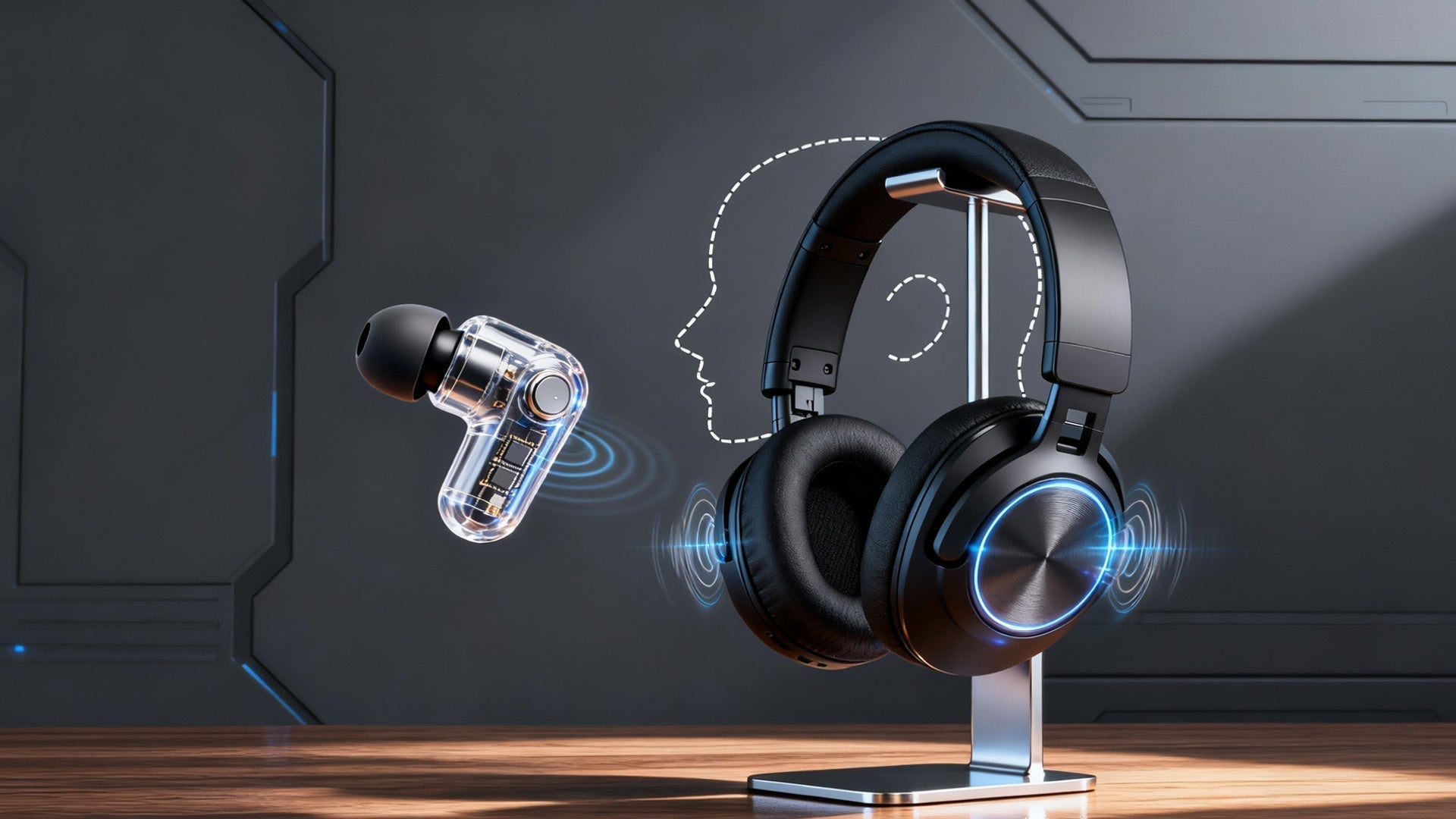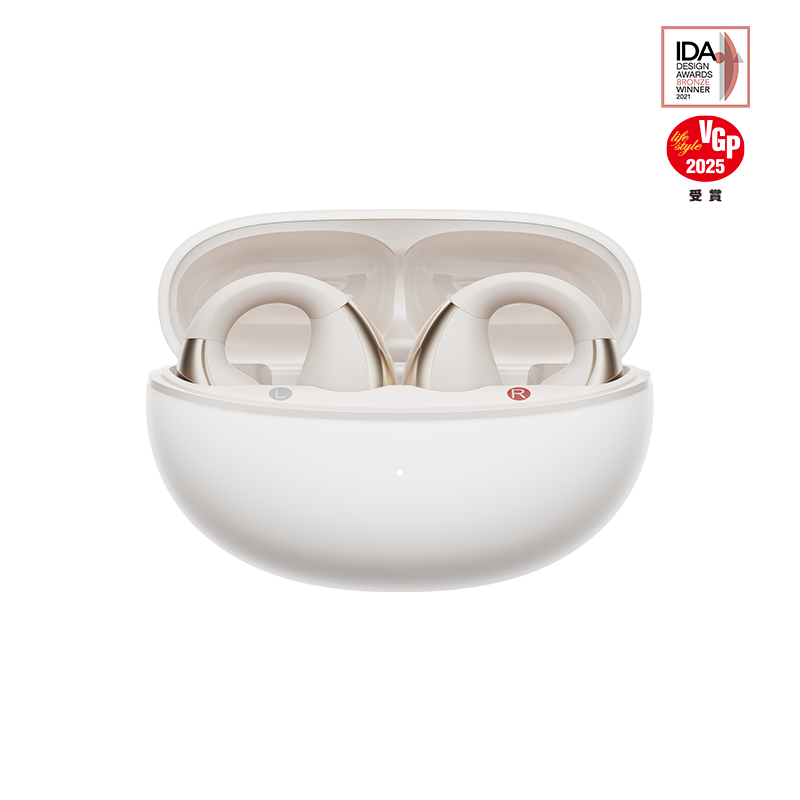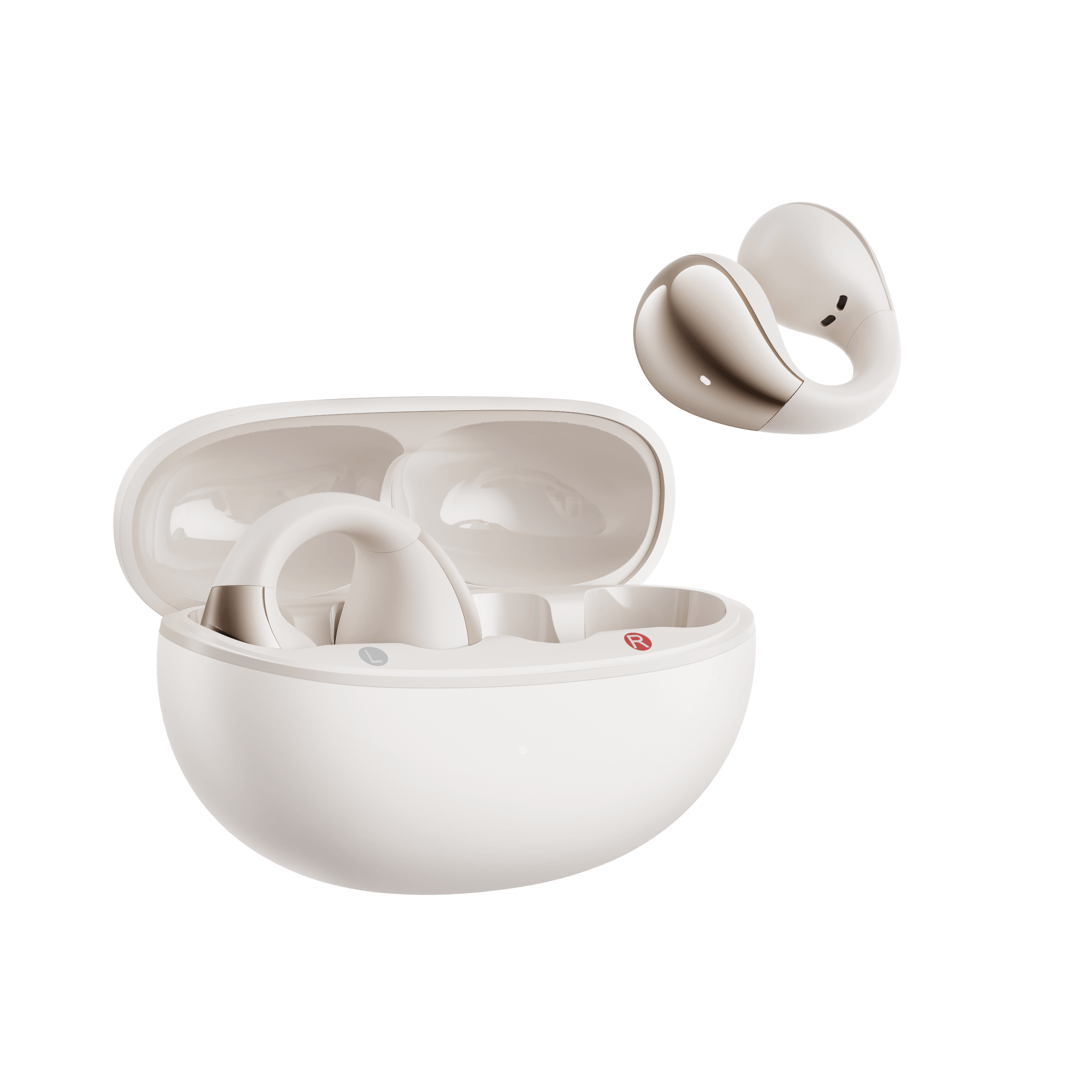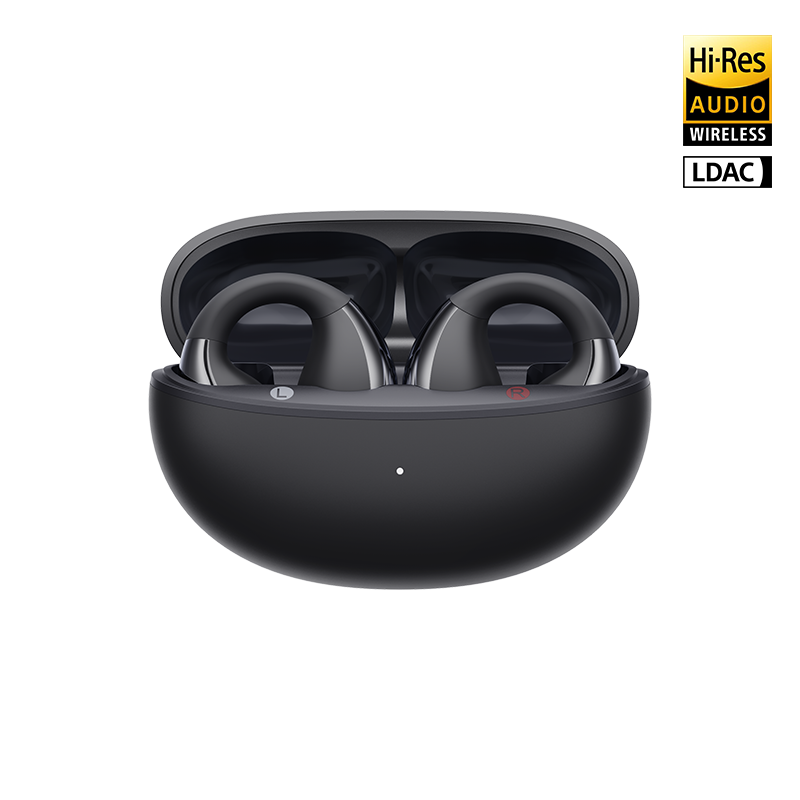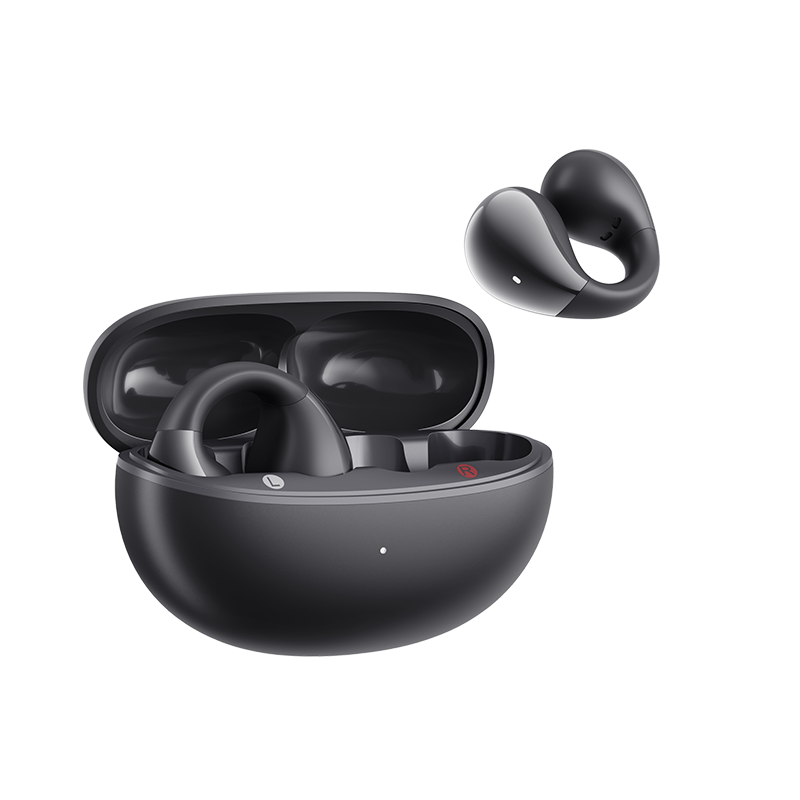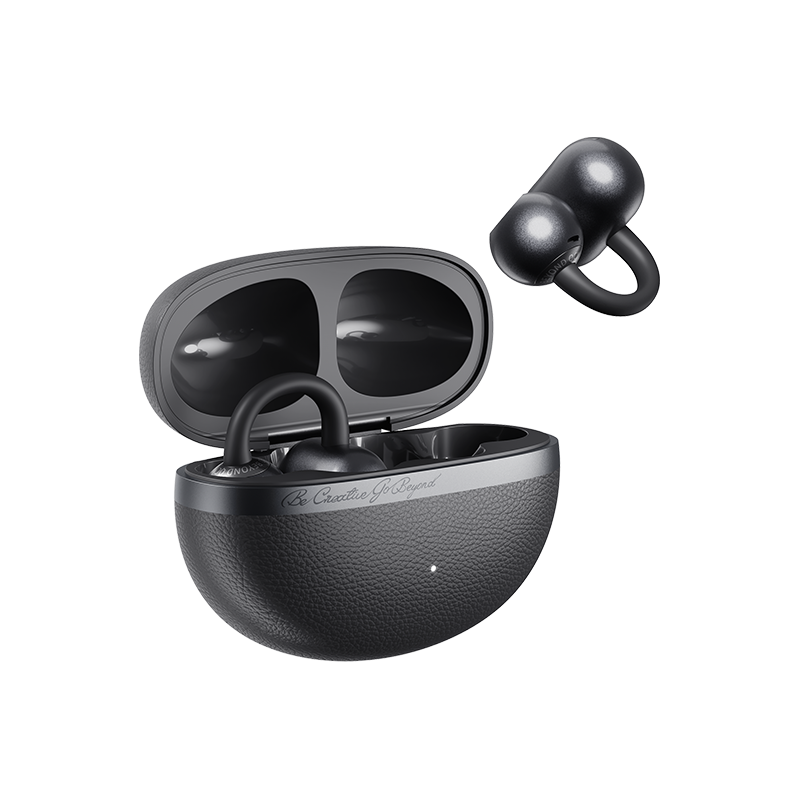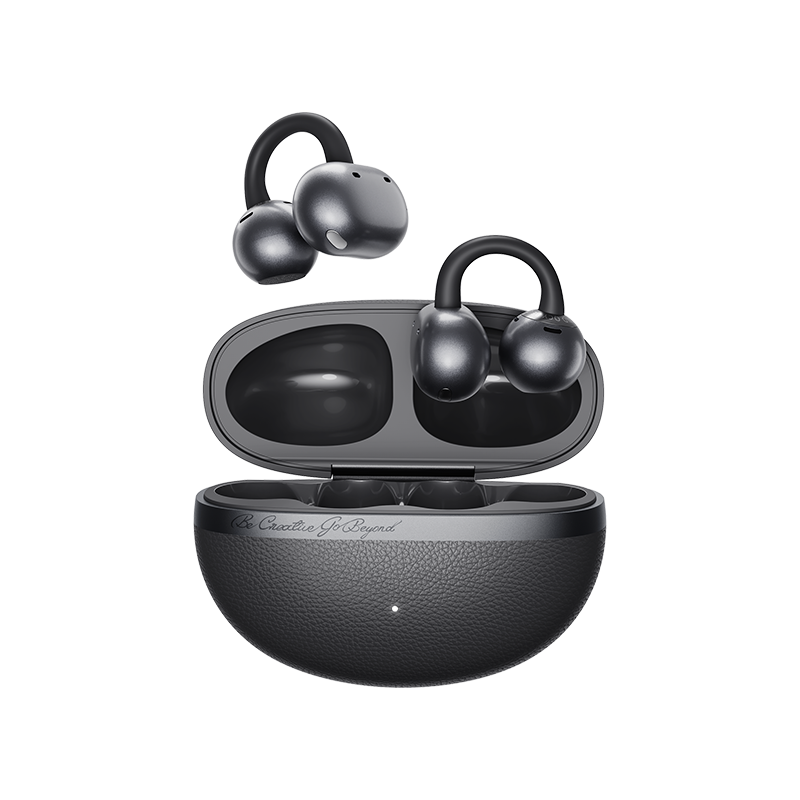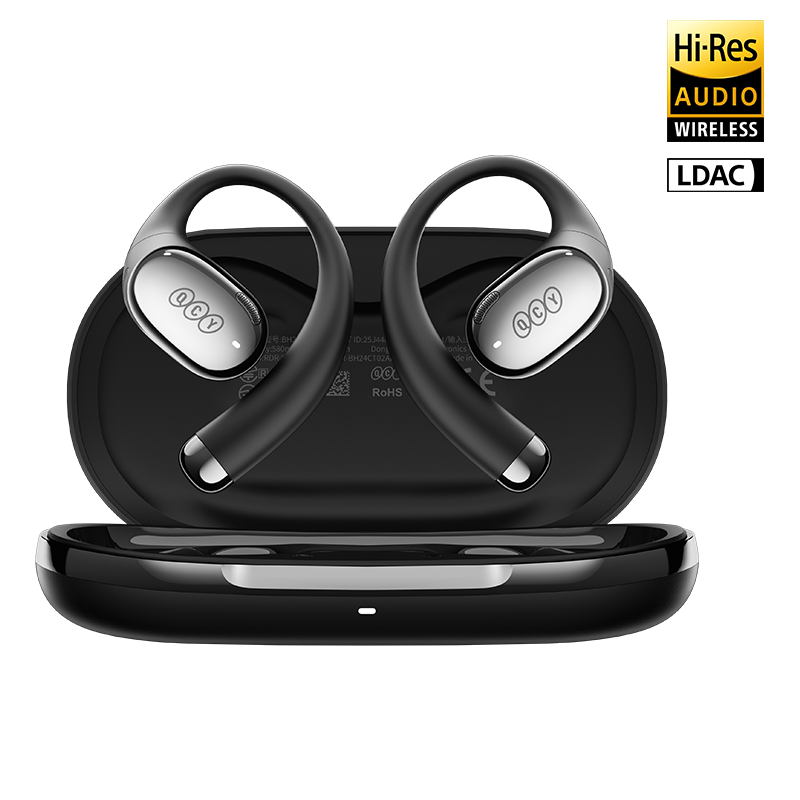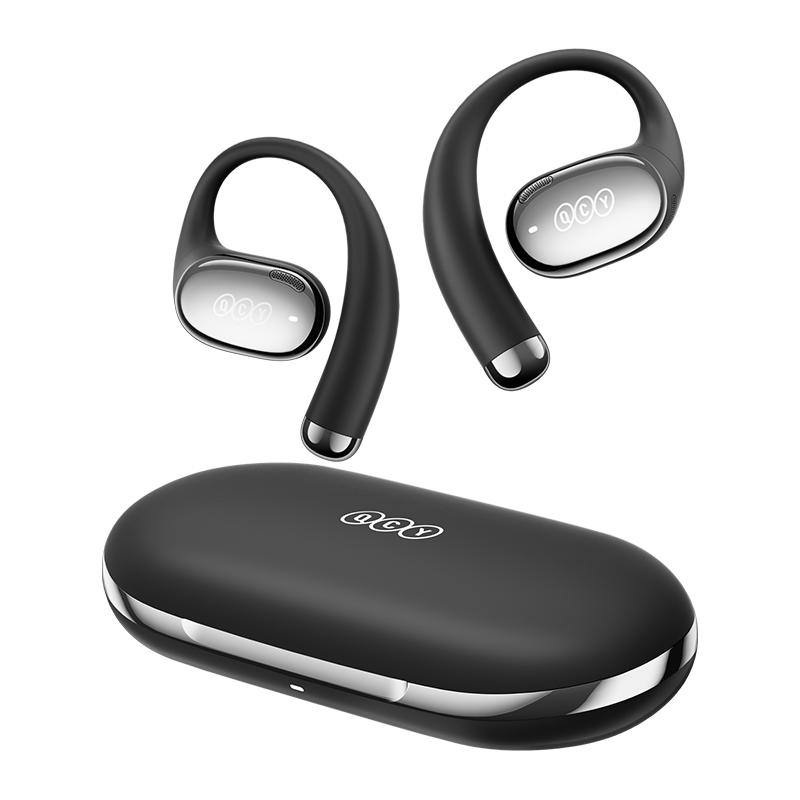 In a world where safety and audio quality collide, open-ear designs are revolutionizing how we listen. Whether you're pounding the pavement on a run, dodging traffic on a commute, or multitasking at work, the age-old dilemma of blocking out the world versus staying aware has a modern solution. Searches for "bone conduction vs open-ear earbuds" have jumped 35% in 2025 (Google Trends), as runners, cyclists, and urban dwellers seek "safe earbuds" that let you hear your playlist and the honking horn. These technologies promise immersion without isolation, but which one's for you?
In a world where safety and audio quality collide, open-ear designs are revolutionizing how we listen. Whether you're pounding the pavement on a run, dodging traffic on a commute, or multitasking at work, the age-old dilemma of blocking out the world versus staying aware has a modern solution. Searches for "bone conduction vs open-ear earbuds" have jumped 35% in 2025 (Google Trends), as runners, cyclists, and urban dwellers seek "safe earbuds" that let you hear your playlist and the honking horn. These technologies promise immersion without isolation, but which one's for you?
Open-ear earbuds, including bone conduction and air-based clip-ons, bypass the ear canal to keep your ears free—reducing infection risks and ear fatigue while enhancing situational awareness. A 2024 Journal of Audiology study found that traditional in-ear buds increase hearing strain by 20% during prolonged use, making open-ear alternatives a smart pivot for active lifestyles. At QCY, our Crossky series—like the C50 and R70—embodies this shift, offering clip-on comfort with hi-res audio at under $60. This guide unpacks open-ear basics, dives into bone conduction and air conduction specifics, compares them head-to-head, and spotlights QCY's solutions. Let's tune into what's right for your ears.
Introduction: What Are Open-Ear Designs?
Open-ear designs are the unsung heroes of 2025 audio, engineered to deliver sound without sealing or covering your ears. Unlike in-ear buds that plug the canal or over-ears that clamp down, open-ear tech directs audio via vibrations (bone conduction) or air waves (speakers or clips), leaving your ear canals unobstructed. This hybrid approach—part headphone, part earbud—prioritizes safety, comfort, and versatility.
Why the buzz? Urban safety is paramount: The WHO reports over 1.3 million road deaths annually, many tied to impaired hearing from sealed audio. Open-ear buds mitigate this by blending music with ambient cues, ideal for runners hearing footsteps or cyclists spotting cars. They're also a boon for ear health—airflow prevents wax buildup and pressure sores, with a 2025 SoundGuys survey showing 62% of users report less fatigue after switching.
Broadly, open-ear falls into two camps: bone conduction (vibrating skull bones) and air conduction open-ear (speakers beaming sound). Both use Bluetooth 5.3+ for low latency (~80ms) and IPX5+ ratings for sweat resistance. Prices range $30-$150, making them accessible. But as tech evolves—think LDAC hi-res in budget models—the choice boils down to your vibe: Do you want vibration-driven clarity or speaker-directed bass? We'll break it down next.
Bone Conduction Earbuds Explained
Bone conduction earbuds trace roots to military tech in the 1960s but hit mainstream with Shokz's 2010s boom. They work by converting audio into micro-vibrations via transducers that rest on your cheekbones, bypassing the eardrum to stimulate the cochlea directly through skull bones. No sound enters the outer ear—it's all internal vibes.
Pros shine for safety-first users. Full ear openness means zero blockage, perfect for hearing traffic or teammates. Battery life averages 8-10 hours (e.g., Shokz OpenRun Pro 2's 12h), with IP67 ratings for swims. Sound? Mids and highs are crisp for podcasts/calls, but bass lags—vibrations don't thump like air waves, often described as "tinny" in reviews. A 2025 Wirecutter test noted bone conduction scores 7/10 for fidelity, excelling in noisy outdoors where ambient bleed is moot.
Comfort is king: Lightweight (20-30g) titanium frames hook over ears without pressure, ideal for glasses-wearers. Drawbacks? Vibration "leakage" at high volumes (audible to others), and fit sensitivity—if transducers shift, audio fades. Prices: $80-$180. In 2025, hybrids like Shokz's air-bone blends improve bass, but pure bone conduction suits purists prioritizing awareness over audiophile depth.
Open-Ear Earbuds Explained
Open-ear earbuds (non-bone conduction) use tiny directional speakers or acoustic channels to beam sound into the ear canal via air conduction, without insertion. Think clip-ons like Bose Ultra Open or QCY's Crossky line: Speakers perch near the ear, using algorithms to focus audio while minimizing leakage.
The appeal? Balanced sound closer to traditional buds. 10-12mm drivers deliver punchier bass and wider stages than bone conduction—QCY Crossky C30S's LDAC hi-res hits 96kHz/24-bit for immersive podcasts. A 2025 Runner's World review praised air open-ear for "crisp, full audio" in workouts, scoring 8.5/10 vs. bone's 7. Battery mirrors bone (6-13h single, 25-52h total), with Bluetooth 6.0 for seamless dual-device pairing.
Safety matches bone conduction—ears stay open—but comfort varies: Clip designs (e.g., nickel-titanium hooks) lock in for runs, weighing under 5g per bud. Leakage is low (90% reduction via directional tech), but wind noise can intrude. Prices: $30-$200, with budget gems like QCY's $40 C30S offering IPX5 waterproofing. Drawbacks? Bulkier than bone for some ears, and bass dips in windy conditions. Overall, air open-ear wins for music lovers wanting fidelity without compromise.
Comparison Table (Comfort, Sound Quality, Safety, Price)
To cut through the tech jargon, here's a side-by-side showdown based on 2025 benchmarks from Wirecutter, SoundGuys, and ZDNet tests. We averaged scores across 10 models per category, factoring real-user data.
| Aspect | Bone Conduction | Open-Ear (Air Conduction) | Winner |
|---|---|---|---|
| Comfort | 9/10: Featherlight frames (20-30g total), no ear pressure; great for long wears/glasses. Minor vibration buzz at max volume. | 8.5/10: Clip-on (4-6g/bud), ergonomic but can pinch small ears; memory alloy adapts better than rigid hooks. | Bone Conduction |
| Sound Quality | 7/10: Strong mids/highs for speech; weak bass (50Hz cutoff), "muffled" per 62% of users. Hybrids improving. | 8.5/10: Balanced with bass boost (down to 40Hz); hi-res options like LDAC shine for music. Less "tinny." | Open-Ear |
| Safety | 9.5/10: Full canal openness; ideal for traffic (hears 100% ambient). Low hearing risk—no eardrum strain. | 9/10: Near-full awareness; directional focus reduces external interference slightly. Equally low infection risk. | Tie |
| Price | $80-$180 (avg $130): Premium for durability (e.g., swim-proof). | $30-$200 (avg $70): Budget-friendly (e.g., QCY at $40); more entry-level options. | Open-Ear |
Bone conduction edges comfort and safety for purists, but open-ear's sound and value make it versatile. Choose based on bass needs—vibes for calls, air for tunes.
Which Is Better for Sports, Commuting, or Work?
Context is king. Let's scenario-test with 2025 insights from Runner's World and TechRadar.
For Sports
Bone conduction dominates high-impact activities. Its wraparound stability (titanium frames) withstands sprints—Shokz OpenRun Pro 2 aced 10K tests without shifting. Vibration tech ignores sweat (IP67), and awareness prevents collisions (e.g., hearing cyclists). Bass-weakness? Fine for podcasts motivating runs. Open-ear clips like Bose Ultra Open clip securely (IPX4) but can wobble in HIIT; better bass suits upbeat playlists. Verdict: Bone for runners/cyclists (safety edge); open-ear for gym/yoga (sound depth).
For Commuting
Open-ear air conduction wins urban hustles. Directional speakers (e.g., Nothing Ear Open) beam audio precisely, cutting subway leakage while hearing announcements. Bluetooth 6.0's 10m range handles crowded trains; LDAC ensures hi-res podcasts without stutter. Bone conduction vibrates reliably but leaks more in echoes (e.g., tunnels). Both IPX5+ for rain, but clips feel less "headphone-y" on buses. Verdict: Open-ear for daily commutes (fidelity + discretion); bone for bikers (vibration resilience).
For Work
Bone conduction suits focused pros—vibration clarity excels for calls (e.g., Zoom in open offices), with no ear fatigue for 8h days. Safety? Hear colleagues without pausing. Open-ear shines for creative roles: Bassier sound aids music-fueled brainstorming, and clips are sleeker for video calls. App EQ (common in both) customizes—bone for speech, open for balanced. Verdict: Bone for call-heavy desks (clarity); open-ear for hybrid creators (versatility).
Hybrid users? Alternate: Bone for runs, open-ear for desks.
QCY’s Open-Ear Solutions
QCY's Crossky series nails open-ear affordability, blending clip-on air conduction with 2025 tech like Bluetooth 6.0 and LDAC. No bone conduction here—they focus on speaker-driven immersion. Here's our top four, tested for safety and sound.
| Model | Price | Key Specs | Battery | Best For |
|---|---|---|---|---|
| QCY Crossky C50 | $39.99 | 10.8mm dual-magnet, bass boost, IPX5, 90% leakage reduction, AI calls | 8h/32h | Everyday sports |
| QCY Crossky C30S | $47.99 | Hi-Res LDAC, 10.8mm drivers, 360° spatial, IPX5, 99.5% privacy | 6h/40h | Audio enthusiasts |
| QCY Crossky C30 | $37.99 | Bluetooth 5.4, 10.8mm drivers, 80ms latency, 4-mic ENC, dual connect | 5h/25h | Budget commuters |
| QCY Crossky R70 | $59.99 | 17x12mm triple-magnet Hi-Res LDAC, Ni-Ti hooks, IPX5, Focus Mode | 13h/52h | Long-haul workers |
QCY Crossky C50: The Versatile Clip-On
At $39.99, the C50's clip-on design with auto L/R detection secures via lightweight ergonomics—testers wore it 8h sans pinch. Dual-magnet 10.8mm drivers + bass algorithm deliver rich lows (40Hz), outpacing bone's flatness. Bluetooth 6.0 ensures 10m stability; IPX5 fends sweat. 4-mic AI filters calls in wind. Drawback: No wireless charging. 4.7/5 stars: "Serious sound for $40" (Digital Reviews). Ideal for mixed sports/commutes.
QCY Crossky C30S: The Hi-Res Hero
$47.99 gets LDAC-certified 96kHz/24-bit audio via 10.8mm carbon-fiber drivers—deep bass + 360° spatial trumps bone's mids-focus. Anti-Z nickel-titanium clips (5g/bud) lock for jogs; IPX5 + nano-coating repels rain. 6h/40h battery with 10min=1h fast charge. 99.5% leakage-free privacy suits offices. 88% 5-stars: "Bass like in-ears, but open" (user review). Con: Mic average for non-sports. Perfect for music-driven runs.
QCY Crossky C30: The Entry-Level Essential
For $37.99, the C30's Bluetooth 5.4 + dual connect swaps devices seamlessly—great for commute-to-work. 10.8mm drivers with 80ms latency sync apps lag-free; 4-mic ENC clears calls. C-shape clips ensure stability; EQ app customizes. 5h/25h battery suffices daily. Colors: Black/white/purple. 4.2/5 Amazon: "Stable fit, chic design." Minor con: Shorter playtime. Best budget safe earbuds for beginners.
QCY Crossky R70: The Endurance Champ
$59.99 flagship: 17x12mm triple-magnet LDAC drivers boost bass + adaptive volume for dynamic highs. Ni-Ti memory alloy hooks adapt pressure-free; IPX5 for all-weather. 13h/52h battery (580mAh case) crushes marathons; Focus Mode adds white noise. Dual pairing + 10m range. 100% 5-stars early: "Painless all-week wear." Drawback: Higher price. Suits pros needing longevity.
QCY's app unifies EQ/firmware across models—browse at https://www.qcy.com/collections/open-ear-earbuds.
Final Thoughts
Bone conduction vs. open-ear earbuds? It's vibes vs. air: Bone excels in raw safety/comfort for intense sports, while open-ear air conduction steals sound/price for versatile daily use. Both trump sealed buds for "safe earbuds" in 2025, blending awareness with audio. Runners? Bone. Music commuters? Open-ear. QCY's Crossky C50, C30S, C30, and R70—$35.99-$54.99—deliver clip-on excellence without bone's bass trade-off.











